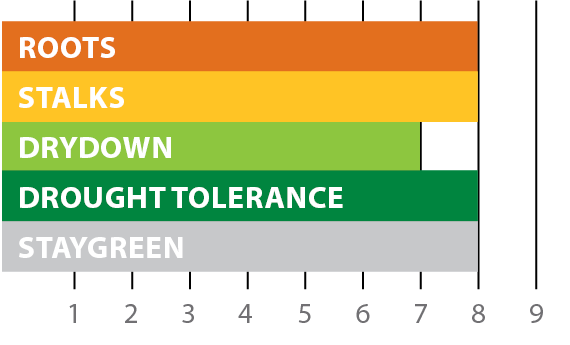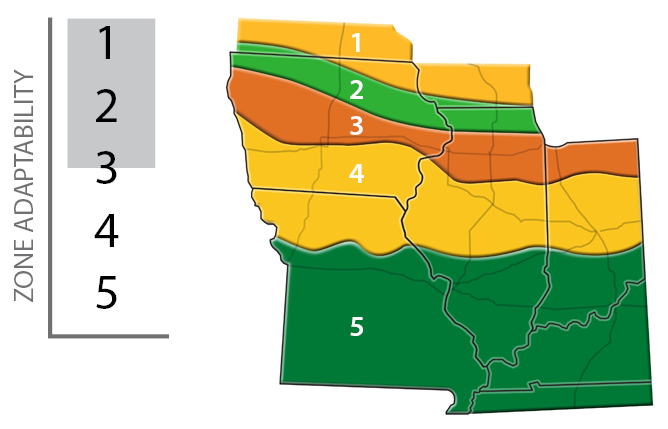Customize your wyffels experience
You don’t have to work for wyffels to be an insider
Get access to exclusive agronomic content, product downloads and more.


Bayer Company is a member of Excellence Through Stewardship® (ETS). Bayer products are commercialized in accordance with ETS Product Launch Stewardship Guidance, and in compliance with Bayer's Policy for Commercialization of Biotechnology-Derived Plant Products in Commodity Crops. This product has been approved for import into key export markets with functioning regulatory systems. Any crop or material produced from this product can only be exported to, or used, processed or sold in countries where all necessary regulatory approvals have been granted. It is a violation of national and international law to move material containing biotech traits across boundaries into nations where import is not permitted. Growers should talk to their grain handler or product purchaser to confirm their buying position for this product. Excellence Through Stewardship® is a registered trademark of Excellence Through Stewardship.
B.t. products may not yet be registered in all states. Check with your seed representative for the registration status in your state.
IMPORTANT IRM INFORMATION. RIB Complete® corn blend products do not require the planting of a structured refuge except in the Cotton-Growing Area where corn earworm is a significant pest. See the IRM/Grower Guide for additional information. Always read and follow IRM requirements.
In DroughtGard® Hybrids with RIB Complete® corn blend, the refuge seed may not always contain the DroughtGard® Hybrids trait.
ALWAYS READ AND FOLLOW PESTICIDE LABEL DIRECTIONS. Roundup Ready® 2 Technology contains genes that confer tolerance to glyphosate. Glyphosate will kill crops that are not tolerant to glyphosate.
DroughtGard®, RIB Complete®, Roundup Ready 2 Technology and Design®, Roundup Ready®, Roundup®, SmartStax®, SmartStax® PRO with RNAi Technology, Trecepta® and VT Double PRO® are trademarks of Bayer Group. LibertyLink and the Water Droplet Design® are registered trademarks of BASF Corporation. Herculex® is a registered trademark of Dow AgroSciences LLC. Respect the Refuge and Corn Design® and Respect the Refuge® are registered trademarks of National Corn Growers Association. All other trademarks are the property of their respective owners.

These ratings are useful as indicators of potential product performance under normal conditions. They should not be considered a guarantee of future performance.
Wide adaptability to a range of soil types. Higher populations will maximize yields. A solid choice on fields with a history of Goss’ wilt. A fungicide application extends the harvest window.

| Rating | Soil Category |
|---|---|
| E |
Light SoilsLOW CEC (<10); OM <1.5%; low water-holding capacity; non-irrigated sand; marginal productivity; drought prone. |
| E |
Medium SoilsEC 11–18; OM 1.5-3.5%; well-drained; silt loam; high productivity. |
| E |
Heavy SoilsHigh CEC (>18); OM >3.5%; poorly-drained; high clay content; gumbo; muck |
| E |
Poorly-drained SoilsSoils that have the potential to remain saturated for prolonged periods; side hill seeps; gumbo muck |
| Legend | ||||
|---|---|---|---|---|
EExcellent |
VGVery Good |
GGood |
FFair |
|
| Trait(s) | VT2P |
|---|---|
| GDUs to Black Layer | A, 2500 |
| Days to Pollination | 70 |
| GDUs to Pollination | E, 1225 |
| Early Vigor | 8 |
| Early Canopy | |
| Plant Height | MS |
| Stalk Strength | 8 |
| Root Strength | 8 |
| Green Snap Resistance | 7 |
| Drought Tolerance | 8 |
| Staygreen | 8 |
| Rimsulfuron Tolerance | N |
|---|
| Ear Flex | SF |
|---|---|
| Ear Length | 8 |
| Ear Height | M |
| Kernel Rows | 18-20 |
| Test Weight | 9 |
| Drydown | 7 |
| Goss’ Wilt Tolerance | 8 |
|---|---|
| Gray Leaf Spot Tolerance | 7 |
| NLB, Race 0, Tolerance | 8 |
| Stewarts Leaf Blight Tolerance | |
| Anthracnose Tolerance | 8 |
| Legend | Numerical ratings are based on comparisons among Wyffels hybrids of like maturity where 1 = Low, 5 = Avg, and 9 = High expressions of a trait | ||||||||
|---|---|---|---|---|---|---|---|---|---|
EEarly for Maturity |
AAverage |
LLate for Maturity |
MMedium |
MSMedium Short |
MTMedium Tall |
TTall |
HHigh |
MHMedium High |
MLMedium Low |
FFlex |
SFSemi-Flex |
DDeterminate |
SDSemi-Determinate |
HRHighly Recommended |
RRecommended |
NNormal Tolerance |
CCaution |
WWarning |
NRNot Rated |